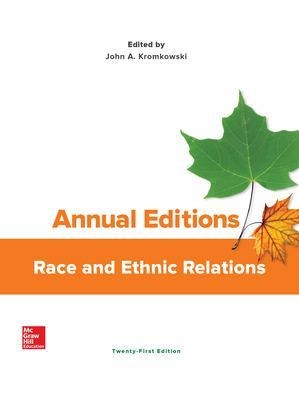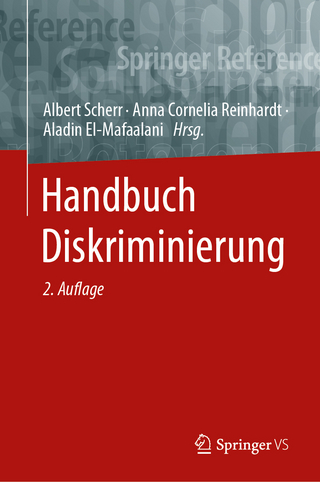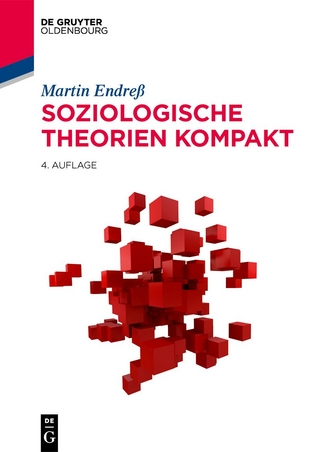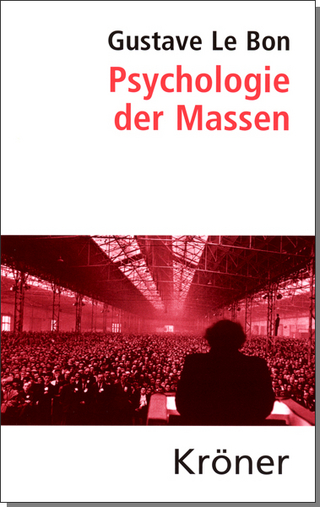
Annual Editions: Race and Ethnic Relations
McGraw-Hill Education (Verlag)
978-1-259-92281-7 (ISBN)
Unit 1: Contemporary Experiences: Persons and Places, Identities, and Communities
S.C. Rampage Spurs Grief, Concern for Church Safety, Scott Dance and Michael A. Memoli, Baltimore Sun, 2015
Dance and Memoli recount the murder of the nine persons in a church in Charleston, South Carolina, the arrest of the killer, an admittedly racially motivated younger person and first public responses to this evil action.
Half a Century after Rioting Ravaged Cambridge, Town Seeks to Embrace History—So as to Transcend It, Jonathan M. Pitts, Baltimore Sun, 2017
This account of Mayor Victoria Jackson-Stanley’s recollection of her family’s participation in the civil rights struggle in a small town in rural Maryland and her own participation in the life of that fragmented community provides an example of how the journalistic fashioning of a historical case study of race relations creates local knowledge that is usable and useful for process of healing required to understand and to overcome the pain of social and political violence.
Life, Death, and Demolition, Steve Hendrix, Washington Post, 2017
Steve Hendrix’s account of the decline, decay and death of a neighborhood in Baltimore brilliantly weaves race, and class and location into a narrative of urban policy failure and the imaging of race and ethnic relations that shaped decades of our domestic self-understanding and the challenges and contradictions exposed by our denial problems and refusal to see the complexities of pluralism and urbanization.
Victoria Mosque Fire Ruled Arson, Jon Wilcox, The Victoria Texas Advocate, 2017
This news update and press release from the Victoria Islamic Center enables the outsider to violence and conflict to enter the world of those that experience fear and invites us to agonize over the aftermath of shattered ethno-religious relations.
At Latin Grammys, Suave Ballads, Raucous Emoting and a Rare Political Turn, Jon Parelas, New York Times, 2015
Jon Parelas’s account of the Latin Grammys is a unique example of “writing the meaning of a culture” as his text transports the reader into ethnic music and clarifies the meaning and uses of music as a transition belt of the binding capacity of ethnic music to shape a shared consciousness and the evocative substance of musicality in communities.
Rancor and Reconciliation, Brendan O’Shaughnessy, Notre Dame Magazine, 2016
Brendan O’Shaughnessy account of the dialogue and response of a university community and culture to undocumented students and bigotry and the attendant endorsement of principles and norms such as the dignity and worth of every human person, regardless of ethnicity, race, gender, class, sexual orientation, immigration status, the commitment to the common good, and to solidarity with the most vulnerable and marginalized.
‘Sanctuary Cities’ Just the Start of Mayors’ Opposition to Trump, Alan Greenblatt, Governing, 2017
This report on the relationship between mayors and the Trump administration’s Executive Order concerning federal funds to cities that adopted approaches to law enforcement called “Sanctuary Cities” reveals the current borders of social and legal contentions, the intersection of immigrants, with local governments, the role of federal government in such issues that spilled-over from the world of words found in electoral campaign rhetoric into the world of governance and public policy implementation.
An Immigrant Church, Then and Now, Denise Fedorow, Today's Catholic News, 2017
This account of ethnic and neighborhood succession from a Polish American into a Hispanic American is not uncommon in the older industrial cities of the Midwest and East, but its particular relevance is that it illustrates the centrality of the community-residential church and school to urban life and privileges the specific location of groups and the dynamic of cooperation required and the unique place specific character of ethnicity as a local identity.
Unit 2: The Immigrant Origins of Diversity, the Political Constructions of Disparities, and the Development of Pluralism in the United States of America
Racial Restrictions in the Law of Citizenship, Ian F. Haney López, White by Law: The Legal Construction of Race, 1996
This article traces the legal history of naturalization in the development of the definitions and legal norms that affected American citizenship.
Dred Scott v. Sandford, Chief Justice Taney, United States Supreme Court, 1856
This case is concerned with the claim by Dred Scott, a slave, who was taken by his master to live in a free state, and then claimed to have lost his status as a slave. The Court ruled that the U.S. Constitution did not protect him, nor other African Americans, whether they were considered free or held as slaves.
Why Korematsu Is Not a Precedent, Noah Feldman, The New York Times, 2016
The fact that in Korematsu v United States (1944) the Supreme Court upheld the wartime conviction of a Japanese American has been cited in campaign rhetoric as legal support of racial ethnic religious discrimination, but Noah Feldman addresses this contention with a much wider set of factual, moral, and legal arguments and evidence against the establishment of a national registry of Muslims immigrants.
Brown et al. v. Board of Education of Topeka et al., Chief Justice Warren, United States Supreme Court, 1954
In this case the Court overturned Plessy v. Ferguson and ended dejure segregation of public schools. The Court ruled that “separate but equal has no place in public education for separate education facilities are inherently unequal.”
Historical Discrimination in the Immigration Laws, from The Tarnished Golden Door, United States Commission on Civil Rights, 1980
This article summarizes the history of immigration laws and their effects on immigrant groups: the Nativist movement of the 1830s, The Chinese Exclusion Acts of the 1880s, the quota system of the 1920s, and the McCarran-Walter Act of 1952.
Extreme Measures, Robert Schmuhl, Notre Dame Magazine, 2016
Robert Schumuhl’s short peak into the persuasion and decisions of President Lyndon Johnson that produced the Civil Rights Act of 1964 takes us beyond the major scholarly accounts of this landmark legislation by reporting the first-hand experiences and recollections of Father Ted Hesburgh, then member of the U. S. Civil Rights Commission, and echoing the ever contemporary challenges of the American ideal this moment represents and signifies for current challenges to liberty and justice for all,
Unit 3: American Demography: If You’re Not Counted, You Don’t Count: The U.S. Census, the Politics of Pluralism, and the Science of Social Indicators
The American Community Survey: The New Dimensions of Race and Ethnicity in America, John David Kromkowski, Building Blocks, Occasional Papers, The National Council of Urban Education Associations, 2010
This article provides a synopsis of data race and ethnic data collection and facsimiles of Census question asked race or color from 1790-2010. Populations totals for 105 specific ethnic groups and unclassified and other not dis-aggregated groups for 2010 and a cross-tab array of social indicators and profiles for American ethnic groups with over 1,000,000,000 persons.
Educational Attainment in the United States: 2015, Camille L. Ryan and Kurt Bauman, Current Population Reports, U.S. Department of Commerce, Economics and Statistics Administration, U.S. Census Bureau, 2016
This compilation of information from the U.S. Census and the American Communities Survey provides arrays of aggregated and disaggregated educational indicators of ethnic and racial populations and trend line from which demographic portraits emerge and variations of education attainment and forecasts of economic mobility can be derived.
Congress and Ancestry: A Broader View of Diversity and How to Start Systematically Looking at It, John David Kromkowski, Occasional Papers NCUEA, 2017
This article systematically measures American ethnic diversity, quantifies and compares levels of ethnic variety at the state level, and presents graphic evidence of profound ethnic clustering.
The Size, Place of Birth, and Geographic Distribution of the Foreign-born Population in the United States: 1960 to 2010, Elizabeth M. Grieco, et al., U.S. Census Bureau, 2012
This compilation of information from the U.S. Census and the American Communities Survey provides arrays of aggregated and disaggregated social and economic indicators and the historical baselines of ethnic demographics including size, distribution, and place of birth of the communities that constitute foreign-born ethnic groups and the stunning increase and variety of the American population.
Income and Poverty in the United States: 2015, Bernadette D. Proctor, Jessica L. Semega, and Melissa A. Kollar, U.S. Census Bureau Current Population Reports, 2016
This compilation of information from the U.S. Census and the American Communities Survey provides arrays of aggregated and disaggregated income indicators of ethnic and racial populations and historical trend line which illustrate the linkages of race and income and the dominance of poverty as a demographic feature of race and ethnic differences and the attendant combination of economic class and social historical as factors in American life and group relations.
Arab Households in the U
nited States: 2006-2010, Maryam Asi and Daniel Beaulieu, American Community Survey, U.S. Department of Commerce, Economics and Statistics Administration, U.S. Census Bureau, 2013
This compilation of information from the U.S. Census and the American Communities Survey provides arrays of indicators including homeownership, income, immigrant origins to create a profile of Arab households as well as a view which disaggregates various Arabs into the ancestry and ethnic, national origins.
Irish-American Heritage Month (March) and St. Patrick's Day (March 17): 2017, U.S. Department of Commerce, Economics and Statistics Administration, U.S. Census Bureau, 2017
This composite of informational social demographic indicators provides a summary profile that includes valued cross-tabs on Irish Americans and web-sites which provide the capacity to drill down into data sources for additional research and insight.
Unit 4: Indigenous Ethnic Groups: The Native Americans
American Indian and Alaska Native Heritage Month: November 2016, U.S. Department of Commerce, Economics, and Statistics Administration, U.S. Census Bureau, 2017
This Census report provides a summary profile of the contemporary descendants of indigenous populations and references to American Factfinder websites from which the researcher can drill down into more detailed data about specific regions and populations.
Ending Violence So Children Can Thrive, Byron L. Dorgan, et al., United States Department of Justice, 2014
This compendium of findings provides a window into and overall situations of Native Americans and particularly children as it makes specific recommendations for legislative and executive action and remedies for these unconscionably cruel facts of misery and neglect.
Does the Fate of the Navajo Nation Depend on Its Language? Elaine Teng, The New Republic, 2014
Elaine Teng’s interview of Dr.Evangeline Parsons-Yazzie about the dispute occasioned by the law challenge to the legitimacy of Chris Deschene to be a candidate for the tribal presidency reveals the intersection of ethnicity, language and law as well as the complex of governance posed by traditional social orders.
Unit 5: African Americans
National African-American History Month: February 2017, U.S. Department of Commerce, Economics, and Statistics Administration, U.S. Census Bureau, 2017
This Census report provides a summary of social indicators of Black (African American) Americans and includes references to other U.S. Census databases and the American Factfinder websites from which the researcher can drill down into more detailed information.
Chicago Soul, Lonnae O’Neal Parker, The Washington Post, 2014
Lonnae O’Neal Parker returned to her South Side Chicago home, and now, a visiting journalist delves into the realities of her childhood neighborhood and the impact of decades of failed urban policy, technological and economic changes and social disintegration to produce a personal and neighborhood level historical and contemporary tapestry of the African American situation.
Unit 6: Hispanic/Latino Americans
Hispanic Heritage Month 2016, U.S. Department of Commerce, Economics, and Statistics Administration, U.S. Census Bureau, 2016
This composite of informational social demographic indicators provides a summary profile that includes valued cross-tabs on Hispanic/Latino Americans and web-sites which provide the capacity to drill down into data sources for additional research and insight.
The Foreign Born from Latin America and the Caribbean: 2010, U.S. Department of Commerce, U.S. Department of Commerce, U.S. Census Bureau, 2011
This compilation of information provides arrays of aggregated and disaggregated indicators including size, distribution, place of birth, citizenship for persons born in Latin America and the Caribbean, the locus of stunning emigration; From less than a million in 1960 to 21.2 million in 2010.
Xenophobia, the Other Face of Racism, Alexander Dawoody, Public Administration Times, 2016
Alexander Dawoody’s op-ed provides popular social psychology lesson in a journal read by public employees and academic public administrationist and human resources practitioners. He provides a rapid summary and extension of the generalist’s critic of racism as based in fear of others and prejudice which he then binds onto the general problem of misperceptions of immigrants. The claim that knowing the bound of racism to xenophobia-the fear of others, will cure this social malady an approach to group relations worthy of deeper analysis, if not critique.
Cuban-Americans: Politics, Culture, and Shifting Demographics, Kristiana Mastropasqua, Journalist's Resource, 2014
The politics and culture of Cuban Americans began a new epoch when the Obama administration began the process to resume relations with Cuba, this moment is also a reminder that the Hispanics/Latinos are really more than a few ethnicities, have varied traditions and historical relations to immigration and the government of the United States.
Unit 7: Asian Americans
Asian/Pacific American Heritage Month: May 2016, U.S. Department of Commerce, U.S. Census Bureau, 2016
This report on ethnic groups that constitute the Asian populations and the various web-based data resources of the U.S. Census and American Communities Survey, provides a profile of social indicators as well as Congressional Resolutions and Commemorations of Asian participation in the peopling of America.
Poverty Rates for Selected Detailed Race and Hispanic Groups by State and Place: 2007-2011, Suzanne Macartney, Alemayehu Bishaw, and Kayla Fontenot, U.S. Department of Commerce, Economics, and Statistics Administration, U.S. Census Bureau, 2013
This compilation and array of indicators derived from the American Community Survey Briefs, enables us to measure variations in location, ethnicity, and extent of poverty and the attendant marginalized condition and lack of participation in the workforce related to both short term and persistent poverty that afflicts persons and places.
Finally a Movie That Captures What It's Like to Be Asian American, Elaine Teng, The New Republic, 2014
Elaine Teng review and Commentary on “Fresh Off the Boat” engages the problematic arena of art, reality, representation, and stereotyping as well as the relationship of ethnic literature and drama to mainstream culture and pluralism.
Unit 8: Euro/Mediterranean Ethnic Americans
White House Wants to Add New Racial Category for Middle Eastern People, Gregory Korte, USA Today, 2016
Gregory Korte’s account of proposed changes in the way the U.S. Census collects racial and ethnic data reveals the process of creating categories that define populations and the institutionalizing bonds of demographics and governance that an immigrant-receiving country must address to assure representation and information that is needed to measure the distribution of benefits and burdens in a pluralistic society.
American Attitudes toward the Israeli-Palestinian Conflict, Arab American Institute, 2016
These data document American public opinion on the most important issues and aspects of the Israeli-Palestinian Conflict and the values and preferences Americans have regarding the Israelis and Palestinians, but the study also reveals the challenge facing popular participation in international relations, that is, many respondents are not familiar enough with topics to offer opinions.
Myths and Facts about Refugees Resettlement, HIAS, 2017
This document prepared by HIAS addresses some common misperceptions and questions that swirl in public opinion as the world experiences the displacement of millions of persons from their homes and the tradition of welcoming refugees that are fleeing persecution and violence and the need for humanitarian aid grows.
Made In Hollywood: Italian Stereotypes in the Movies, Rosanne De Luca Braun, The Order Sons of Italy in America
Rosanne De Luca Braun's short account of Italian-Americans in the film industry reveals aspects of ethnic group history and mass media, the imaginative and creative development of ethnic group stereotypes, and their impact on personal and group identities framed by negative images and narratives and finally the demand to restore balance and accuracy by defamed and aggrieved ethnics.
Polonia: Today's Profile Tomorrow's Promise, Dominik Stecula and Thaddeus C. Radzilowski, Piast Institute, Dekaban Lecture, 2013
This report provides a fledgling attempt to systematically identify the attitudes, dispositions, common purposes and preferences on issues that could become the articulation of definitive domestic and international agenda of Polish Americans.
Unit 9: Contemporary Dilemmas and Contentions: The Search for Convergent Issues and Common Values
How to Protect Diversity during Trump’s Presidency, Richard D. Kahlenberg, The New Republic, 2017
Richard D. Kahlenberg’s description of the threats to diversity posed by a white nationalist agenda and his prescription for an expanded concept of liberalism and wider progressive agenda that would include the extension of economic benefits is a timely and provocative framing of fresh discussion of race and ethnic relations which could foster hopes not fears in America.
Myths Debunked: Why Did White Evangelical Christians Vote for Trump? Myriam Renaud, Sightings: Religion in Public Life. The Martin Marty Center at the University of Chicago Divinity School, 2017
Myriam Renaud’s findings about on surveys of white evangelical Christians provide information that is not only indicative of their motivation for supporting the election of President Trump, but even more importantly for revealing the awesome gap between the claims and issues preferences of the leadership of evangelicals and the attitudes and motivations of this populations as a whole captured in public samplings of opinion.
The Ugly Truth about Hate Crimes—in 5 Charts and Maps, Christopher Ingraham, The Washington Post, 2015
Christopher Ingraham’s report on the murder of nine persons in the AME Church in Charleston places this hate crime into the historical and geographical patterns of violence perpetrated by killers driven and possessed by bigotry and violence promoting ideologies.
All Hollowed Out, Victor Tan Chen, The Atlantic, 2016
Victor Tan Chen report on the ignored and neglected aspects of poverty in the white working class revisits the discussion that began in the de-industrialization of the late 1960s and its reemergence in the political rhetoric of populism on the right and left in the campaign of 2016.
More than a House: Home and Hospitality in Camden, Pilar Hogan Closkey, Building Community in a Mobile/Global Age, 2013
Pilar Hogan Closkey’s case review of Camden, NJ, reveals the reality of the racial and economic isolation of persons in one of the most devastated situations of urban America and the pathway of citizens using Catholic social teaching a guide to community building and recovering/creating cooperative approaches and new grounded in the virtue of hospitality as a counter-force to hatred, conflict, neglect, and ignorance.
Hold Up, ‘Hon’: Baltimore’s Black Vernacular, Youthful, Dynamic if Less Recognized than ‘Bawlmerese’, Brittany Britto, The Baltimore Sun, 2017
Brittany Britto’s journalistic venture into linguistics illustrates the importance of localism and language as features of ethnicity and its essential reality within lived communities and through communication and the lyrics of human voices capture by attentive observers of social interaction.
Hard Truths: Law Enforcement and Race, James B. Comey, Federal Bureau of Investigation, 2015
James B. Comey, Director of the FBI, speech marks a significant point in the history of law enforcement, the conversation about race and policing, and emergence of a new narrative that personal, professional, and public.
Investigation of the Ferguson Police Department, United States Department of Justice Civil Rights Division, United States Department of Justice, 2015
This official enquiry into the practices, behaviors and record of the criminal justice systempolicing, courts, motivations as well as recommendations for ways of mending the bonds of trust may become a landmark document that guides the administration of justice in America.
| Erscheinungsdatum | 30.01.2018 |
|---|---|
| Verlagsort | OH |
| Sprache | englisch |
| Maße | 211 x 277 mm |
| Gewicht | 694 g |
| Themenwelt | Sozialwissenschaften ► Soziologie ► Allgemeine Soziologie |
| ISBN-10 | 1-259-92281-2 / 1259922812 |
| ISBN-13 | 978-1-259-92281-7 / 9781259922817 |
| Zustand | Neuware |
| Haben Sie eine Frage zum Produkt? |
aus dem Bereich


